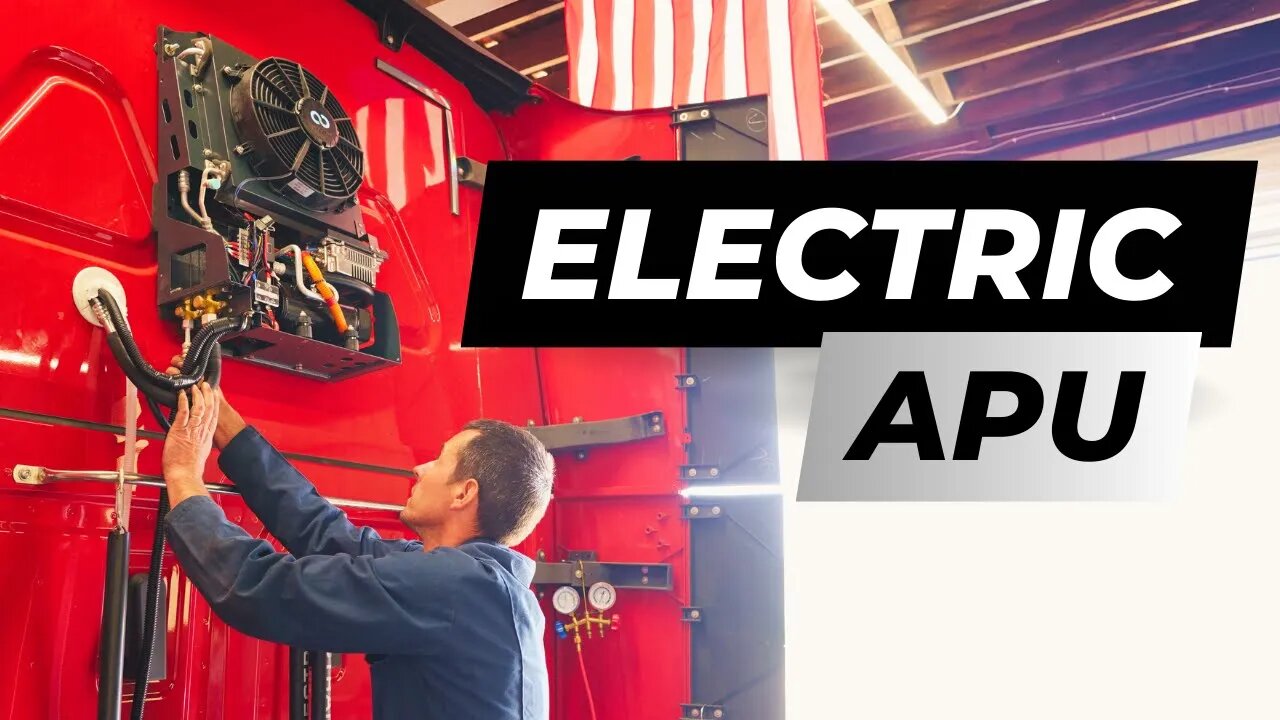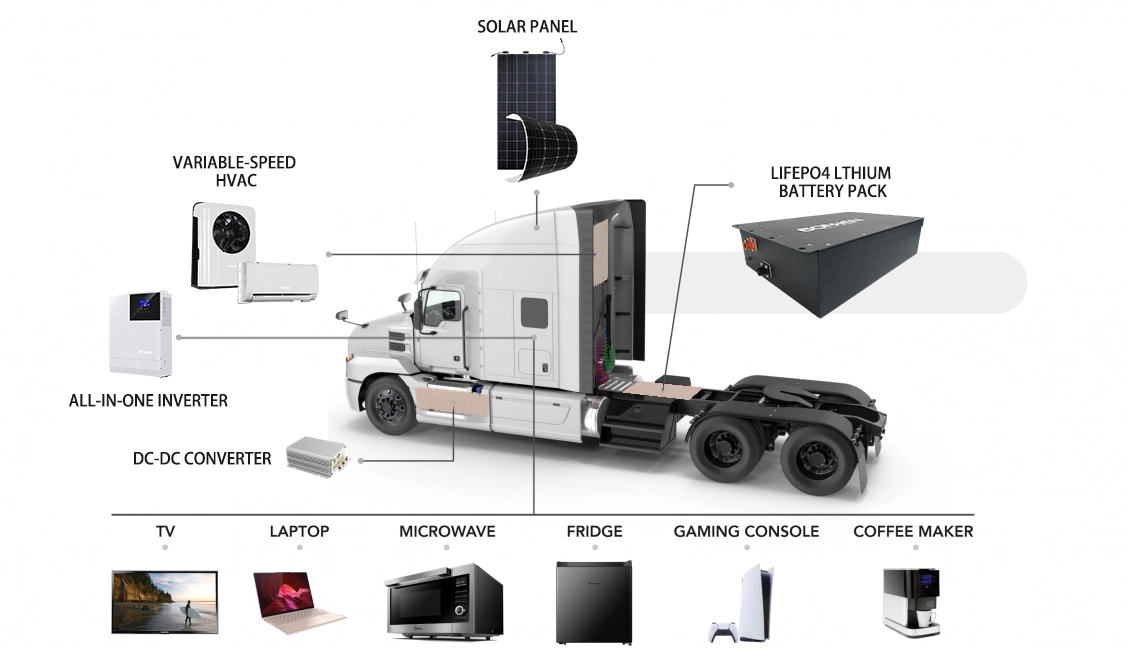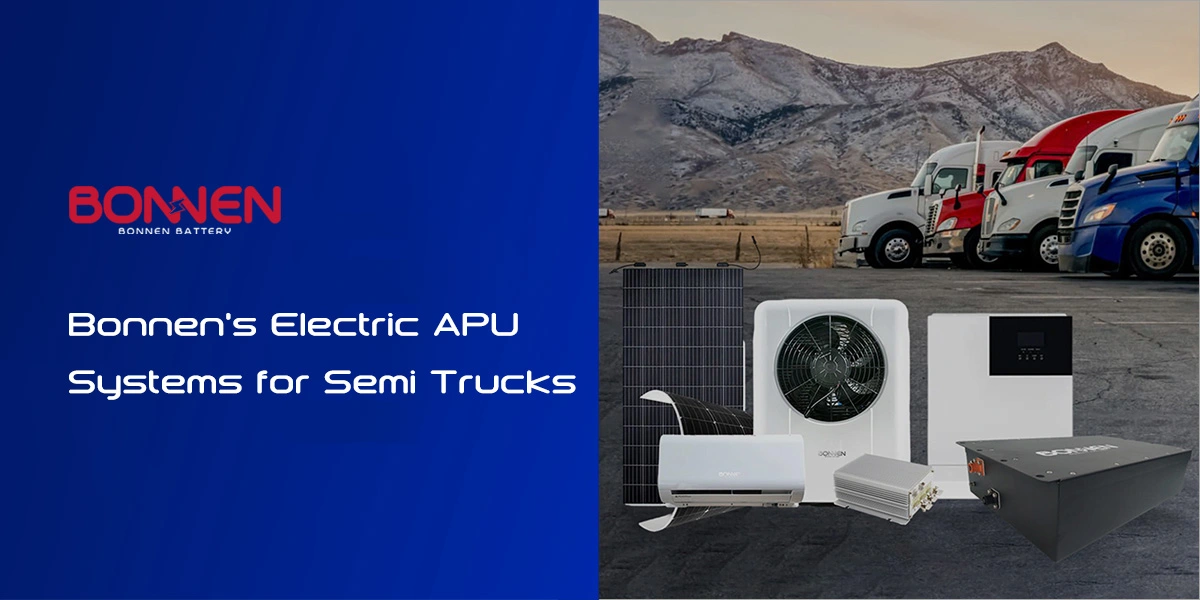What Is Apu On Semi Truck

What is an APU on a Semi-Truck and How Can it Save You Money?
For homeowners, business owners, and even forward-thinking HVAC contractors, understanding energy efficiency is paramount. While the image of a massive semi-truck might seem distant from your daily concerns, the technology optimizing their fuel consumption shares principles applicable to your own energy-saving endeavors. Specifically, understanding what an Auxiliary Power Unit (APU) is on a semi-truck can offer valuable insights into reducing idle time and energy waste, concepts directly transferable to your home and business.
The Problem: Idling Semi-Trucks and Energy Waste
Long-haul truckers face a unique challenge: they often need to rest or wait for loading/unloading, requiring them to maintain comfortable cabin temperatures and power electronic devices. Traditionally, this meant idling the truck's main engine for hours. This practice is incredibly wasteful, consuming significant amounts of fuel and releasing harmful emissions. The Environmental Protection Agency (EPA) has long recognized the detrimental effects of idling, highlighting it as a major source of pollution and fuel consumption in the transportation sector.
Consider this: a typical semi-truck idles for an average of 6-8 hours per day, consuming approximately 1 gallon of diesel fuel per hour. That's 6-8 gallons of wasted fuel daily, translating to hundreds of dollars per month for a single truck! Moreover, prolonged idling causes excessive wear and tear on the engine, leading to increased maintenance costs and reduced engine life.
The Solution: Auxiliary Power Units (APUs)
Enter the Auxiliary Power Unit (APU). An APU is essentially a small, independent generator that provides power for various functions without requiring the main engine to run. These functions typically include:
- Climate Control: Heating and air conditioning for the cab.
- Electricity: Powering lights, refrigerators, televisions, laptops, and other electronic devices.
- Engine Warming: Pre-heating the engine in cold weather for easier starting and reduced wear.
- Battery Charging: Maintaining battery charge for reliable starting.
By using an APU, truckers can significantly reduce idling time and fuel consumption. This translates directly into cost savings, reduced emissions, and prolonged engine life. Let's delve into the different types of APUs available:
Types of APUs
APUs primarily fall into two categories:
- Diesel-Powered APUs: These are the most common type, running on diesel fuel from the truck's fuel tank. They typically consist of a small diesel engine coupled with a generator.
- Electric APUs: These APUs rely on battery power to operate. They are charged while the truck is running and provide power when the main engine is off.
While diesel-powered APUs offer longer run times, electric APUs are generally quieter and produce zero emissions while operating. The choice between the two depends on the specific needs and priorities of the truck owner.
The Benefits of APUs: ROI, Energy Savings, and Environmental Impact
The adoption of APUs offers a multitude of benefits, making them a worthwhile investment for trucking companies and owner-operators. Let's break down the key advantages:
- Reduced Fuel Consumption: As mentioned earlier, APUs drastically reduce idling time, leading to significant fuel savings. Studies have shown that APUs can save up to 80% of fuel compared to idling the main engine.
- Lower Operating Costs: Reduced fuel consumption translates directly into lower fuel bills. Additionally, APUs minimize engine wear and tear, reducing maintenance costs and extending engine life.
- Increased Driver Comfort: APUs provide a comfortable and quiet environment for drivers during rest periods, improving their well-being and reducing fatigue. A well-rested driver is a safer driver.
- Reduced Emissions: By minimizing idling, APUs contribute to cleaner air and a smaller carbon footprint. This aligns with growing environmental concerns and can enhance a company's image.
- Compliance with Regulations: Many states and municipalities have anti-idling laws in place. Using an APU helps truckers comply with these regulations and avoid fines.
- Increased Resale Value: Trucks equipped with APUs often command a higher resale value compared to those without.
The Return on Investment (ROI) for an APU can be significant. While the initial investment can range from $8,000 to $12,000 (or more, depending on the type and features), the fuel savings and reduced maintenance costs can offset this expense within a few years. Furthermore, government rebates and tax incentives may be available to further reduce the upfront cost.
"The payback period for an APU is typically between 2 and 4 years, depending on factors such as fuel prices, idling habits, and maintenance costs,"
says a report from the American Transportation Research Institute (ATRI).
Applying APU Principles to Home and Business Energy Efficiency
While APUs are designed for semi-trucks, the underlying principle of reducing idle time and energy waste is directly applicable to your home and business. Here's how:
- Smart Thermostats: Just as an APU provides localized climate control, a smart thermostat allows you to program different temperature settings for different times of the day, minimizing energy consumption when you're away or asleep. Energy Star certified smart thermostats can learn your habits and automatically adjust the temperature to optimize energy savings.
- Occupancy Sensors: Similar to how an APU provides power only when needed, occupancy sensors can automatically turn lights on and off based on room occupancy, eliminating wasted energy when rooms are unoccupied.
- Zone Heating and Cooling: Instead of heating or cooling your entire home or office, consider using zone heating and cooling systems to target specific areas that require temperature control. This is analogous to the localized climate control provided by an APU.
- Energy Audits: A professional energy audit can identify areas where energy is being wasted in your home or business, just as a truck inspection can identify inefficiencies that lead to excessive idling.
- Efficient Appliances and Equipment: Upgrading to Energy Star certified appliances and equipment can significantly reduce energy consumption, similar to how an APU reduces fuel consumption compared to idling the main engine.
Smart HVAC Integration for Enhanced Energy Management
Integrating smart HVAC systems with other smart home or building technologies can further enhance energy efficiency. For example, connecting your smart thermostat to your smart lighting system can allow you to automatically adjust the temperature when the lights are turned off, indicating that the room is unoccupied.
Furthermore, data analytics can be used to track energy consumption patterns and identify areas for improvement. By monitoring your energy usage in real-time, you can make informed decisions about how to optimize your energy consumption and reduce your utility bills.
Government Rebates and Incentives for Energy Efficiency
Many government agencies and utility companies offer rebates and incentives for homeowners and businesses who invest in energy-efficient technologies. These incentives can significantly reduce the upfront cost of installing smart thermostats, energy-efficient appliances, and other energy-saving measures.
Be sure to check with your local utility company and government agencies to see what rebates and incentives are available in your area. The Database of State Incentives for Renewables & Efficiency (DSIRE) is a comprehensive online resource for finding information on energy efficiency incentives.
Conclusion: Learning from Semi-Trucks for a Sustainable Future
While the world of semi-trucks might seem far removed from the everyday lives of homeowners and business owners, the technology driving fuel efficiency in these vehicles offers valuable lessons for reducing energy waste in our own homes and businesses. By understanding the principles behind APUs and applying them to our own energy-saving efforts, we can all contribute to a more sustainable future.
Embracing smart HVAC systems, conducting energy audits, and taking advantage of government incentives are just a few of the steps we can take to reduce our energy consumption and lower our utility bills. Just as an APU helps truckers save money and reduce emissions, energy-efficient solutions can help us create a more comfortable, affordable, and environmentally friendly world.










